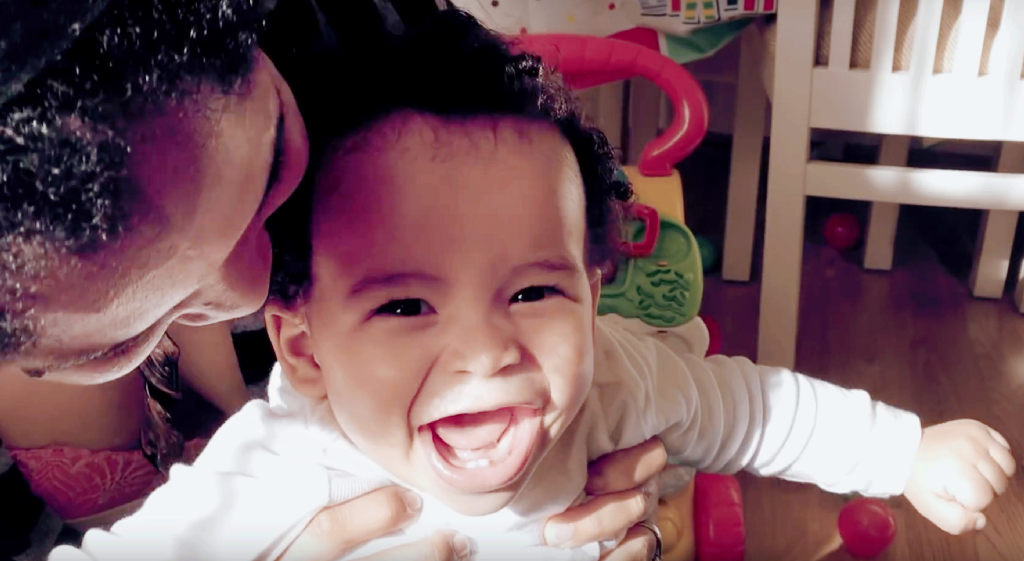A Laughter Expert Says This Song Makes Babies Happy

This jam is so hot with the newborn crowd.
What if parents struggling to pacify their screaming baby could just press play, eliciting joyous giggles and smiles instead of cries?
UK baby food manufacturer Cow & Gate’s baby club tasked blue-haired baby laughter expert Dr. Caspar Addyman and music psychologist Lauren Stewart with crafting a song to do just that. The duo enlisted tech-savvy Grammy-winning musician — and mother of a baby girl — Imogen Heap to compose and perform “The Happy Song.”
Scientists know what kind of sound structure babies prefer, but their emotional response to tunes is still murky. Addyman and Stewart wanted to find what kind of music makes babies calm and content, which parents could also enjoy.
“The Happy Song” evolved from past research and surveys on sounds parents and their babies gravitated towards. Data shows babies like female vocals, songs in a major key and a simple main melody. To mimic a baby’s quick heartbeat, the song needed an upbeat tempo and elements to build excitement, like rising pitch glides and drum rolls.
Heap created two fast and two slow melodies to test in front of 26 babies from 6 to 12 months old and their parents. Twenty babies preferred the faster melody, so the crew adjusted the melody to 163 beats per minute. Then they created the final song based on reactions to the music — we’re talking baby giggles, smiles and dances. Talk about an adorable focus group.
Heap incorporated “plosive” vocal sounds, consonant sounds formed by stopping airflow, like “pa” and “ba.” Throw in a baby’s favorite noises, like raspberries, sneezing and animal sounds, in between lyrics about a parent’s boundless love for her baby, and you’ve got a winning nursery rhyme-like tune.
So, does it work? Like any good aunt chasing results in the name of science, I asked my sister for permission to experiment with her 15-month-old son, Duncan. He’s the grooviest kid I know: He loves his toy drum set, sways to the beat of the “Splash and Bubbles” theme song and sings with his mom, letting out “gahs” that are totally on pitch. “The Happy Song” grabbed his attention, but the enthrallment quickly dissolved. He handed me a plastic plane to fly and then was more interested in stealing my cell phone than the music it played. Looks like Elvis’ “Hound Dog,” which makes him spin in ballistic circles, works better on that little man.
Addyman and Stewart plan to conduct follow-up studies to further examine babies’ physiological responses to happy music and how they are introduced to music. Duncan and I (and his parents) will be waiting. Until then, listen or test out the happy jam for yourself:
